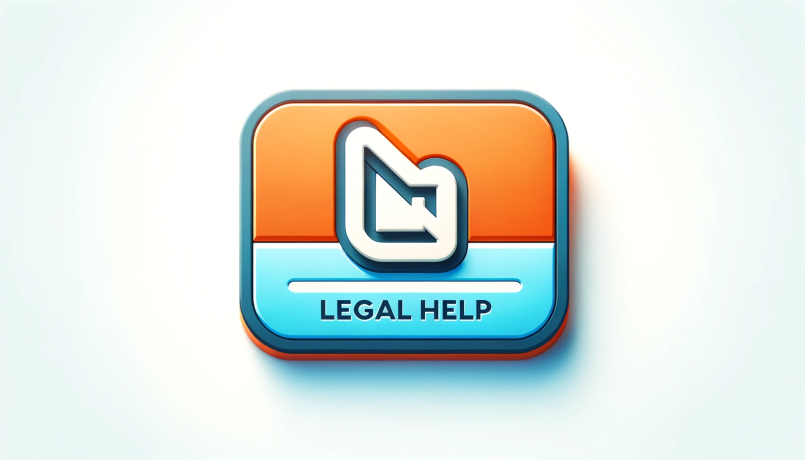
Learn how to protect your digital legacy with these 10 essential tips for including digital assets in your will. Ensure your online accounts and memories are managed according to your wishes after you're gone.
by LawInc Staff
May 23, 2024
As our lives increasingly move online, deciding what happens with digital assets after death poses uncharted challenges. Maneuvering through estate planning complexities amidst evolving technologies requires foresight and this guide covers core strategies unifying the country’s leading estate planning professionals in the digital age.

Need assistance with digital estate planning or any other legal issue? Get in touch with us for expert help!
We detail account management approaches, beneficiary designation procedures, data access provisions and more to empower comprehensive control over online legacies.
1. Inventory Your Digital Assets
-
- Identify Online Accounts: List email, social media, cloud storage, financial accounts etc.
- Record Access Credentials: Document usernames, passwords, security questions, two-factor authentication details.
- Estimate Monetary Values: Note accounts holding funds, payment histories, digital property worths.
- Prioritize Sentimental Significance: Flag emotionally meaningful assets like photos/videos.
- Update Regularly: Maintain accurate records as accounts change over time.
Examples:
-
- Rhonda cataloged 35 key online accounts spanning communication, commerce and storage platforms.
- Eduardo kept an encrypted spreadsheet of login credentials for his executor.
- Mei valued her affiliate marketing payment histories at over $80,000 in annual income.
- Jose flagged an online photo archive as a top sentimental priority to preserve.
- Tyra reviewed and updated her digital inventory spreadsheet quarterly.
How to Proceed:
-
- Search email records and browser histories to surface all meaningful accounts.
- Use a password manager to securely track access credentials.
- Cross-reference financial statements to identify accounts with monetary value.
- Cull through media to earmark files/folders of particular emotional significance.
- Schedule recurring calendar reminders to review and refresh records.
FAQs:
-
- How often should digital inventories update? At least annually but immediately after major life events.
- What if some accounts are rarely used? Still include if they contain any files, data or financial ties.
- Should I print a physical copy of my digital asset inventory? Advisable in a secure location in case of tech failure.
- How to choose what has sentimental value? Imagine what loved ones would most appreciate as an emotional keepsake.
- What level of detail is needed for access credentials? Enough for authorized parties to readily login.
2. Decide How to Transfer Assets
-
- Determine Inheritance Goals: Consider beneficiary needs, relationships, and your legacy vision.
- Specify Allocation in Estate Plans: Name digital asset beneficiaries explicitly in wills/trusts.
- Utilize Account-Specific Tools: Facebook Legacy Contact, Google Inactive Account Manager etc.
- Appoint Digital Executors: Authorize tech-savvy, diplomatic and discreet estate administrators.
- Plan for a Digital Estate Sale: Arrange auctioning off valuable digital property like domains, crypto etc.
Examples:
-
- Jamal divided digital photo albums equally between his children to promote family bond.
- Priya’s trust agreement bequeathed her blog IP rights to her business partner.
- Kai assigned his gaming accounts to fellow players via platform legacy tools.
- Renee chose her tech-savvy niece to serve as a co-digital executor.
- Liam arranged post-mortem sale of his premium domain portfolio to fund philanthropic causes.
How to Proceed:
-
- Align transfer approaches with overall estate distribution goals and values.
- Consult estate planners to optimally structure digital asset inheritance.
- Research account-specific legacy tools from relevant platform providers.
- Choose executors with technical, interpersonal and organizational skills.
- Investigate digital estate sale options for monetizing digital property.
FAQs:
-
- Should I name the same beneficiaries for regular and digital assets? Not necessarily – consider digital savvy and sentimentality.
- What if platforms lack account-specific legacy tools? Default to will/trust directives granting access authorization.
- Can I appoint multiple digital executors? Yes, co-executors may segregate duties based on skillsets.
- How to distribute assets with both monetary and sentimental value? Prioritize emotional connections over fractional financial interests.
- What’s the benefit of a digital estate sale? Efficiently liquidates web property into cash proceeds for distribution.
3. Provide Consent & Instructions
-
- Give Lawful Access Authorization: Ensure estate plans clearly permit fiduciaries to manage digital assets.
- Cite Relevant Statutes: Reference RUFADAA and state laws enabling digital inheritance.
- Be Specific Yet Flexible: Itemize major assets but accommodate evolving account details.
- Specify Dispositional Wishes: Leave instructions for distribution, preservation, closure etc.
- Grant Omission Discretion: Authorize fiduciaries to exclude digital assets as appropriate.
Examples:
-
- Olivia’s will states: “I authorize my executor to access and manage my digital assets and electronic communications.”
- Nathan’s trust references the RUFADAA statute permitting fiduciary digital asset control.
- Chloe listed major accounts but added: “…and any similar digital asset accounts I may open in the future.”
- Vijay’s will instructed: “Please close my social media profiles but preserve my cloud-stored writings for publication.”
- Elena told her executor: “Use your judgment to exclude any digital assets lacking inherent value from my estate.”
How to Proceed:
-
- Explicitly authorize fiduciaries to access and manage digital assets and electronic communications.
- Consult legal counsel to properly cite applicable federal and state statutes.
- Name primary assets specifically but use broad language to include catch-all account categories.
- Leave detailed instructions for each major digital asset’s preferred handling.
- Give fiduciaries discretion to make judgment calls about incorporating or omitting certain digital assets.
FAQs:
-
- What exact language grants digital asset access authorization? “I authorize my fiduciaries to access, manage, control, and dispose of my digital assets.”
- Should I include digital asset clauses in both wills and trusts? Ideally yes for maximum clarity and legal basis.
- What if estate plans lack digital asset provisions? Fiduciaries facebarriers accessing accounts without explicit permission.
- How detailed should distribution instructions be? Enough to guide fiduciaries but allow flexibility as tech evolves.
- What’s an example of when to grant omission discretion? Excluding digital assets that may cause family conflict or reputational damage.
4. Back Up to External Storage
-
- Regularly Download Key Data: Preserve photos, videos, documents, contacts to local hard drives.
- Utilize Cloud Backup Services: Enable automated syncing to Dropbox, Google Drive, iCloud etc.
- Maintain Redundancies: Keep multiple backup copies across devices and locations.
- Encrypt Sensitive Info: Password-protect backup drives, use VPNs, enable two-factor authentication.
- Share Access With Fiduciaries: Ensure estate executors can readily retrieve backup data.
Examples:
-
- Aaliyah downloads all social media content monthly to an external hard drive.
- Dante enabled iCloud backups for automatic syncing of his iPhone photos and contacts.
- Simone maintains duplicate photo archives on USB drives in home and office safes.
- Ravi encrypts his external hard drives and uses a VPN on public Wi-Fi networks.
- Lucia gave her sister a sealed envelope with backup drive decryption keys to access if needed.
How to Proceed:
-
- Set calendar reminders to regularly download key digital assets to external storage.
- Activate automatic cloud backup services and monitor to ensure successful syncing.
- Implement a 3-2-1 backup strategy: 3 copies, 2 media types, 1 stored offsite.
- Use strong encryption and security best practices to safeguard sensitive data.
- Establish protocols for fiduciaries to securely retrieve backup data if needed.
FAQs:
-
- How often should I back up digital assets? At least monthly for key data, more frequently for critical files.
- Are cloud backup services secure? Generally yes with strong user access controls, but use caution with sensitive info.
- What’s the best way to encrypt backup data? Software like VeraCrypt or hardware-encrypted external drives.
- Should I back up data on my work computer? Check with your employer, as they may already do so and may control that data.
- How can I ensure my fiduciaries can access my backups? Provide them with sealed instructions, encryption keys, and device locations.
5. Draft a Digital Asset Memorandum
-
- Specify Account Details: Compile logins, answers to security questions, two-factor setups etc.
- Include Dispositional Desires: Express your preferred handling, transfer, preservation wishes.
- Indicate Backup Locations: List where executors can find downloaded archives and devices.
- Provide Fiduciary Instructions: Share memo securely with agents, reference in estate docs.
- Update Frequently: Adjust to reflect evolved account details, assets and preferences.
Examples:
-
- Wei drafted a memo spreadsheet detailing his 25 core digital accounts and access credentials.
- Nia’s memo requests profile deletion for finality but photo preservation for memories.
- Mahmoud lists his backup hard drive locations so agents can access underlying data.
- Tessa references her digital memorandum in her will, entrusting a sealed copy to her lawyer.
- Gus updates his memorandum quarterly, accounting for changed login details and closed accounts.
How to Proceed:
-
- Compile key account info like URLs, usernames, passwords, security questions, two-factor details etc.
- Articulate preferences for account handling e.g. preservation, transfer, closure, memorialization etc.
- List physical locations of devices holding digital assets, plus any backup access keys needed.
- Entrust memos to estate executors and reference in wills/trusts granting fiduciary access.
- Review and update memo details regularly to capture evolving assets and directives.
FAQs:
-
- What’s the best format for a digital memorandum? Encrypted document or spreadsheet updatable over time.
- Should I include my memorandum in my will? Reference it in the will but keep the memo as a separate secure document.
- How often should I update my digital memorandum? Quarterly at minimum but immediately upon major account changes.
- Who should have access to my memorandum? Only your fiduciaries who will handle your estate.
- What if my digital account preferences change over time? Evolving directives are natural – update your memo to reflect new goals.
6. Address Digital Business Assets
-
- Distinguish Personal vs Business Accounts: Note which digital assets merit special treatment.
- Appraise Intellectual Property Values: Estimate worth of domains, websites, digital content, trademarks etc.
- Put Succession Plans in Place: Arrange business asset transitions that maximize enterprise values.
- Specify Profit Disbursement: Detail how income streams should be allocated and to which beneficiaries.
- Coordinate With Company Bylaws: Align personal planning with corporate partner agreements.
Examples:
-
- Anita flags her professional website and content as business IP assets in her memorandum.
- Tareq commissioned a formal valuation of his 50+ monetized affiliate sites and domains.
- Bina’s estate plan transfers her e-commerce brand to her daughter to continue its growth.
- Jorge stipulates 50% of future e-book profits for his wife and 25% each for his two children.
- Marcus aligned his digital transition plans with his LLC operating agreement’s succession clauses.
How to Proceed:
-
- Clearly label all digital assets used for business or monetization purposes.
- Hire IP valuation experts to gauge fair market values of digital business property.
- Define ideal succession pathways for enterprises and key talent to assume control.
- Name beneficiaries of future business income streams and profit sharing allocations.
- Reconcile estate plans with business governing documents to resolve any conflicts.
FAQs:
-
- What if I mix personal and business tasks in the same accounts? Attempt to separate going forward; label for fiduciaries to differentiate.
- Can I just declare my own digital IP valuations? Best to get independent expert appraisals for credibility.
- What if I want to bequeath my business to multiple parties? Outline detailed division of responsibilities, ownership, and profit sharing.
- Should I put my business transition plans in corporate or personal documents? Ideally both for seamless coordination.
- I have business partners – do I need to include them in my succession plans? Yes, reconcile plans together to satisfy all stakeholder interests.
7. Plan for Digital Afterlife
-
- Consider Memorial Preferences: Envision if you want profiles to persist as remembrances.
- Assess Comfort With Posthumous Messaging: Some assets enable scheduled post-mortem communications.
- Evaluate AI Replication Ethics: Ponder if you’re okay with future chatbots mimicking your personality.
- Anticipate Changing Death Services: Digital footprint management offerings will likely evolve over time.
- Opt for Flexible Directives: Empower fiduciaries to make judgment calls as technologies shift.
Examples:
-
- Aiden requests his Facebook account be memorialized for communal remembrance and reflection.
- Bianca schedules 10 years of posthumous birthday messages to loved ones via a digital time capsule service.
- Cyrus is uneasy about AI avatars replicating his personality, so prohibits that use case.
- Delia realizes digital afterlife services will advance, so focuses on desired outcomes vs exact tools.
- Ethan empowers his executors to make responsible decisions about his digital footprint as times change.
How to Proceed:
-
- Decide which if any digital accounts you want to persist as memorials after death.
- Determine if posthumous messaging aligns with your values and final communication goals.
- Prohibit uses of your digital footprint that make you uneasy, like AI personality replication.
- Research current digital afterlife platforms to inform possibilities but avoid naming specific tools.
- Give agents flexibility to implement your digital afterlife vision responsibly as contexts evolve.
FAQs:
-
- Can I just tell my executor my afterlife preferences? It’s best to put them in writing for clarity and legal weight.
- What if my posthumous messaging makes loved ones uncomfortable? Aim to balance your expressive instincts with their emotional needs.
- Is it safe to assume AI replication tech will become commonplace? Impossible to say, but judicious to proactively articulate your philosophical boundaries.
- Should I try to prescribe exactly which digital afterlife tools to use? No, overly specific directives may quickly become outdated as tech evolves.
- What autonomy should I grant my digital executor? Enough to faithfully but flexibly implement your afterlife vision in changing contexts.
8. Secure Sensitive Information
-
- Password-Protect Devices and Files: Require logins for access to computers, phones, hard drives etc.
- Encrypt Cloud Data: Add protection layers to remote digital assets beyond basic account access.
- Secure Backup Copies: Ensure your local digital archives are encrypted and password-protected.
- Use a Password Manager: Tools like LastPass or 1Password create strong unique codes for each asset.
- Enable Two-Factor Authentication: Require a second proof of ID beyond just password entry.
Examples:
-
- Farah locks her computer and phone with secure passwords and activates auto-logout timeouts.
- Gio adds encryption to sensitive Dropbox files in addition to his overall account access controls.
- Hadley uses VeraCrypt to secure her external hard drive holding financial and legal archives.
- Isaac manages his hundreds of account logins with a password manager to ensure strong unique codes.
- Jada turns on two-factor authentication for all platforms offering that extra security layer.
How to Proceed:
-
- Put passcodes on all computers, phones, tablets and encrypt hard drives holding sensitive info.
- Identify cloud-stored files with confidential data and add file-level encryption for extra safety.
- Use tools like VeraCrypt, AxCrypt or BitLocker to secure backup devices and archives.
- Utilize a password manager to create, store and auto-fill strong unique login codes across all assets.
- Activate two-factor authentication like text codes or authentication apps everywhere possible.
FAQs:
-
- What if I forget my device login password? Most devices have secondary account recovery options but plan ahead carefully.
- Is it excessive to add file encryption beyond cloud account security? No, the extra protection is judicious for confidential data.
- Can I just memorize all my account passwords? Not advisable – a password manager is far more secure and convenient.
- What if I lose my 2FA phone or device? Most platforms provide backup codes to regain access with extra identity verification.
- Do I need different security for different devices? Ideally yes – computers, phones, tablets etc. all merit distinct login protections.
9. Grant Specific Bequests
-
- Pass Along Purchased Media: Name beneficiaries for e-books, digital music, video game libraries etc.
- Transfer Sentimental Favorites: Allocate emotionally-significant songs, e-books, videos in personal ways.
- Consider Charitable Donations: Explore donating digital assets to nonprofit institutions.
- Assign Digital Heirlooms: Choose iconic remembrances like slideshows to pass through generations.
- Coordinate With Overall Estate Plans: Ensure digital gifts align with broader inheritance frameworks.
Examples:
-
- Kamal wills his extensive Kindle e-book collection to his book club president.
- Leila specifies 5 songs for each of her children that were particularly special to their relationships.
- Mira donates her music collection to the Rock & Roll Hall of Fame as a cultural contribution.
- Nikhil designates a multimedia slideshow as a priceless family heirloom to transfer through generations.
- Olivia ensures her digital music bequests fit her overall asset distribution percentages to each beneficiary.
How to Proceed:
-
- Inventory purchased digital media like e-books, MP3s, digital videos etc and record transfer wishes.
- Reflect on digital artifacts that hold special meaning for certain relationships and communicate those significance stories.
- Research if any digital asset collections suit institutional donation for philanthropic and cultural legacy.
- Identify particular digital mementos you want passed through generations and frame their symbolic importance.
- Cross-reference specific digital bequests with broader estate plans to ensure alignment and fairness.
FAQs:
-
- How do I know who should get what digital gifts? Consider identities, relationships and potential future symbolic value to recipients.
- Should I explain my sentimental digital bequests? Yes, your assignations will carry more meaning with personal significance statements.
- What if my family prefers physical philanthropy to digital donations? Have conversations to get on the same page about charitable visions and values.
- How should I frame digital heirlooms for posterity? As artifacts that tell important family history and identity stories.
- Can I put digital bequests in the same documents as other gifts? Yes, integration helps avoid conflicting inheritance directives.
10. Enlist Professional Help
-
- Engage Estate Planning Attorneys: Consult legal counsel to properly address digital assets in wills/trusts.
- Hire Digital Asset Organizers: Firms like Everplans and Kinnami aggregate and securely store digital info.
- Appoint Social Media Will Executors: Name digital-savvy agents to handle account transfers and memorials.
- Lean on Financial Advisors: Discuss digital property values and distribution effects on overall estate.
- Loop in Tech Support Contacts: Identify helpers to assist your fiduciaries with device/data access practicalities.
Examples:
-
- Petra’s estate lawyer updated her will with digital asset directives per the RUFADAA statute.
- Qiang hired Everplans to aggregate a secure master repository of all his digital accounts and files.
- Reyna designated her gaming clan leader as a social media will co-executor to handle her avatar memorials.
- Samir reviewed his digital holdings estimated values with his wealth advisor to plan for estate tax exposures.
- Tanya introduced her spouse to her tech guru friend who can help unlock her devices if needed.
How to Proceed:
-
- Interview estate attorneys about their digital asset competencies before engaging to ensure proper expertise.
- Research digital asset organizer tools/firms and test drive options before committing to any one system.
- Name one traditional executor to handle overall estate, plus digital-savvy co-executors for account transfers/closures.
- Schedule time with financial advisors to assess digital property value and estate tax ramifications.
- Make introductions between your inner circle and your tech support contacts to enable coordination if needed.
FAQs:
-
- How to tell if estate lawyers understand digital asset nuances? Ask about the RUFADAA statute and their digital property experience.
- What protections do digital asset organizers provide? Secure encryption, access partitioning, regular backups, clear Terms of Service.
- Should I appoint separate traditional and digital executors? Ideal to have one overall lead executor and digital co-executors – not totally separate.
- Do financial advisors need visibility to all my digital assets? Only those with monetary value relevant for investment, tax and estate planning.
- What if I don’t have tech-savvy friends for my family to lean on? Proactively line up professional tech support resources and introduce them to your inner circle.
Summary

Did You Know? The average person has dozens of digital accounts with potential monetary value, yet many overlook these assets in their estate plans. This could leave a significant amount of digital wealth unaccounted for and inaccessible to heirs. Ensure your digital legacy is protected!
As our lives increasingly intertwine with vast digital ecosystems, accounting for these assets in estate plans has become paramount. From sentimental records to income-generating platforms, our digital footprints define and valuably enrich our legacies.
Thankfully, by being proactive and seeking proper counsel, we can harness proven strategies to assert control over our digital destinies. Partnering with experienced estate planners and leveraging emerging asset protection technologies, we can craft secure, flexible, and meaningful bequest frameworks built for our ever-evolving digital lifestyles. In doing so, we empower ourselves and our families, extending our most precious memories and projects through generations.
Need an Estate Lawyer? Contact Us
If you need help incorporating digital assets into your estate plans or any other legal issue, contact us to be connected with an experienced estate planning expert. Skilled legal guidance protects your rights, interests and digital legacy.
Test Your Digital Estate Planning Knowledge
Questions: Inventory Digital Assets
-
- 1. What should a digital inventory include?
- A) Only assets with monetary value
- B) Only sentimental assets
- C) Only assets with login credentials
- D) All digital property types
- 2. How often should you update your inventory?
- A) Once and never again
- B) Annually at minimum
- C) Only after major life events
- D) Every 5 years
- 3. Who should have access to your inventory?
- A) Everyone in your family
- B) Only your spouse/partner
- C) Only your digital executor
- D) All your fiduciaries and heirs
- 4. How should you prioritize what to inventory?
- A) By monetary value only
- B) By sentimental value only
- C) A mix of both
- D) It doesn’t matter
- 5. Where is the best place to securely store a digital inventory?
- A) A public Google Doc
- B) Printed in your filing cabinet
- C) An encrypted digital vault
- D) Your personal email drafts
- 1. What should a digital inventory include?
Answers: Inventory Digital Assets
-
- 1. D) A thorough inventory covers all types of digital property, regardless of monetary value, including sentimental assets.
- 2. B) At minimum, review and update your inventory annually, and immediately upon major life changes.
- 3. C) Digital executor(s) should have primary access, though other fiduciaries may need access too.
- 4. C) Prioritize assets by a mix of monetary and sentimental value, as both carry importance.
- 5. C) An encrypted digital vault provides the ideal mix of security and accessibility for fiduciaries.
Questions: Transfer Digital Assets
-
- 1. What should drive digital asset inheritance decisions?
- A) Solely financial considerations
- B) Solely interpersonal relationships
- C) Only practical technical ability
- D) A mix of all relevant factors
- 2. Where should you specify digital asset beneficiaries?
- A) Wills and trusts only
- B) With service providers only
- C) Both estate plans and platforms
- D) Informal personal notes only
- 3. Who makes the best digital executor?
- A) Your closest familial relation
- B) Your most tech-savvy friend
- C) A diplomatically firm outsider
- D) Whoever volunteers first
- 4.What’s the best way to handle creative digital assets?
- A) Let platforms terminate them
- B) Automatically publicize them
- C) Transfer IP rights per wishes
- D) Give access to everyone
- 5. Should you ever name minors as digital beneficiaries?
- A) Never under any circumstances
- B) Only if no other options exist
- C) Yes with clear usage conditions
- D) Always as the default option
- 1. What should drive digital asset inheritance decisions?
Answers: Transfer Digital Assets
-
- 1. D) Consider a mix of financial value, relational bonds, technical savvy and dispositional intent when allocating digital assets.
- 2. C) Name beneficiaries in both formal estate plans and on platforms directly using legacy tools.
- 3. C) An ideal digital executor balances tech savvy, diplomacy, objectivity and deference to your wishes.
- 4. C) Transfer IP rights to chosen heirs per your wishes and instruct executors accordingly.
- 5. C) You can name minors but establish clear usage/access conditions and name an adult custodian.
Questions: Provide Access Authorization
-
- 1. What legal document(s) should authorize fiduciary access?
- A) Wills only
- B) Trusts only
- C) Both wills and trusts
- D) None are truly necessary
- 2. Which laws govern fiduciary digital asset rights?
- A) RUFADAA
- B) PEAC Act
- C) Both federal and state laws
- D) No laws address these issues
- 3. How specific should digital access clauses be?
- A) As broad as possible only
- B) As narrow as possible only
- C) A tailored balance of both
- D) Specificity doesn’t matter
- 4. What level of access discretion should fiduciaries have?
- A) Sole unlimited authority
- B) No situational flexibility
- C) Bounded situational judgment
- D) No access rights whatsoever
- 5. Should you rely solely on platform legacy tools?
- A) Yes, they’re legally sufficient
- B) No, but use them as supplements
- C) Sometimes based on asset value
- D) It depends on provider policies
- 1. What legal document(s) should authorize fiduciary access?
Answers: Provide Access Authorization
-
- 1. C) Include fiduciary access clauses in both wills and trusts to solidify an intent paper trail.
- 2. C) Cite relevant federal statutes like RUFADAA and PEAC Act along with corresponding state laws.
- 3. C) Be specific enough to guide executors but broad enough to accommodate changing accounts.
- 4. C) Grant fiduciaries bounded discretion to exercise prudent situational judgment within your wishes.
- 5. B) Don’t solely rely on legacy tools but use them to reinforce estate plan directives as added safeguards.
Questions: Secure Sensitive Information
-
- 1. Where should you apply access credentials?
- A) Devices only
- B) Digital files only
- C) Online accounts only
- D) All of the above
- 2. What’s the most secure digital asset inventory method?
- A) Paper notebook
- B) Unencrypted computer file
- C) Password manager tool
- D) Memorization only
- 3. How should you secure sensitive cloud data?
- A) File encryption
- B) Two-factor authentication
- C) Both of the above
- D) Neither of the above
- 4. How can password managers boost security?
- A) Generating strong passwords
- B) Enabling secure sharing
- C) Monitoring data breaches
- D) All of the above
- 5. What’s a critical security protection for local digital backups?
- A) Store in a locked room
- B) Use a numeric passcode
- C) Implement device encryption
- D) Hide in a secret place
- 1. Where should you apply access credentials?
Answers: Secure Sensitive Information
-
- 1. D) Password-protect all devices, digital files and online accounts to secure sensitive data from unauthorized access.
- 2. C) Password manager tools offer the most secure way to create, store and share complex credentials.
- 3. C) Combine file-level encryption with two-factor authentication for optimal cloud data security.
- 4. D) Password managers strengthen security by generating strong codes, enabling secure sharing, and monitoring breach exposure.
- 5. C) Implement device-level encryption for all physical digital asset backups to protect against theft or loss.
Disclaimer
The information presented in this article is intended for general informational purposes only. The content does not constitute legal advice nor create an attorney-client relationship. While we strive to ensure the information is accurate, we provide no guarantees. Unique details of individual situations may require tailored applications of the strategies discussed. We advise consulting practicing attorneys for counsel specific to personal circumstances and in accordance with relevant jurisdictional laws and regulations. State bar associations provide lawyer referral services to help identify licensed attorneys.
Also See
Digital Assets in Wills and Trusts: Navigating the New Frontier









